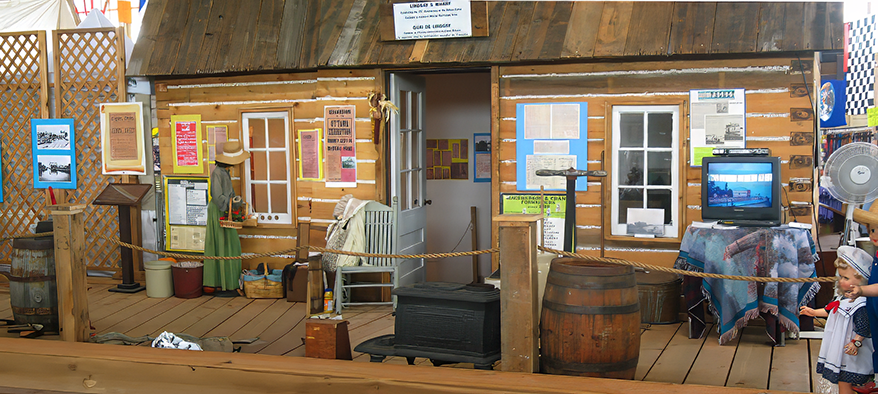The Lindsays and Lindsay’s Wharf ~ Kars
The Lindsays and Lindsay's Wharf ~ Kars
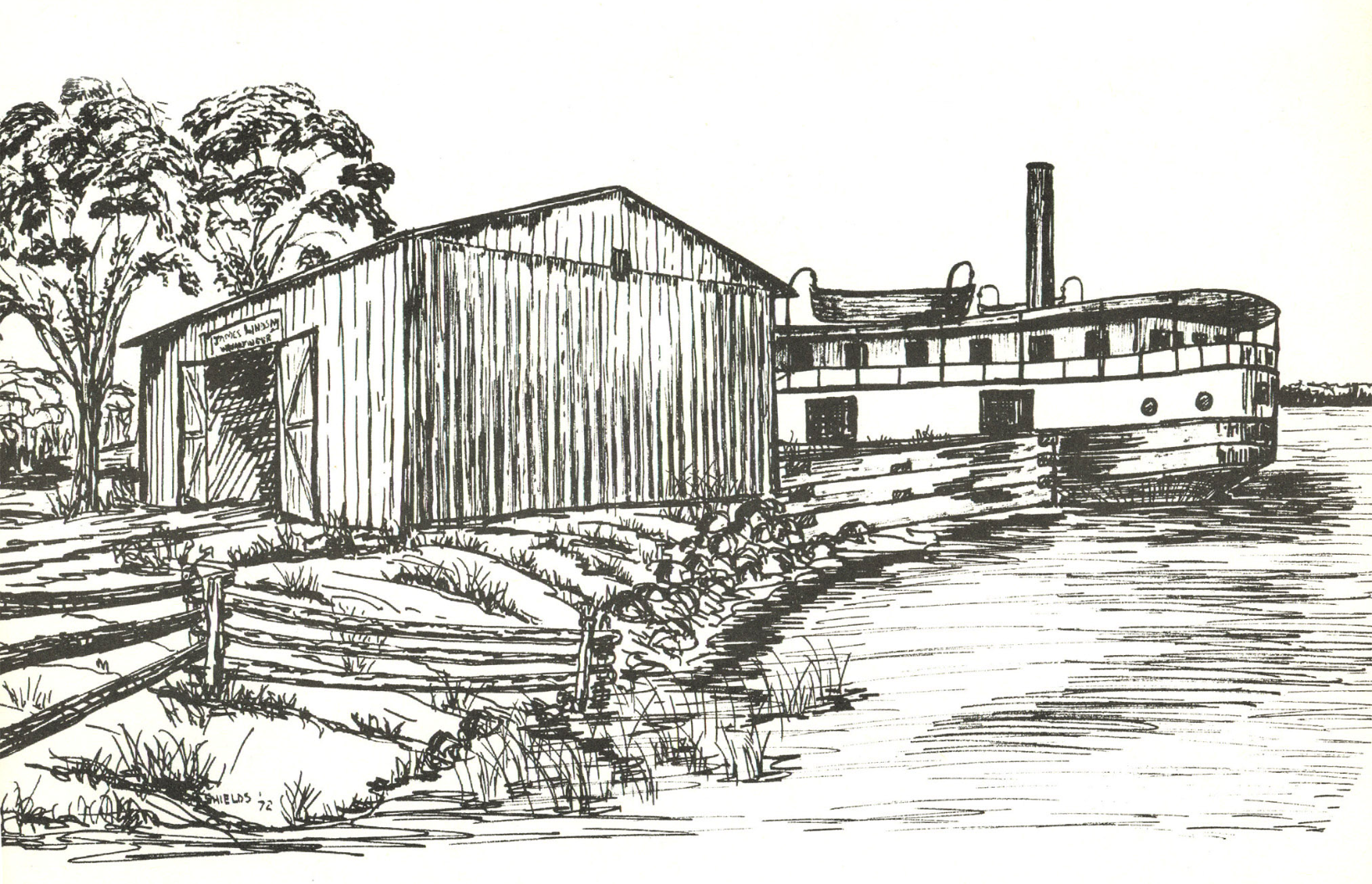
From an article by Coral Lindsay
In May, 1832, James and Ellin (Goodwin) Lindsay with their 3-year-old son and infant daughter watched from their homestead on the west shore of the Rideau as Colonel John By, Mrs. Esther By and, their daughters headed downstream toward Bytown on the steamboat Rideau. This was the inaugural voyage and marked the official opening of the Rideau Canal 175 years ago.
The Lindsays, Scots Presbyterian immigrants, had purchased land south of the future Kars Village. Their log house stood near the riverbank. The Lindsays began clearing the forests for farming, and building a wharf and wharfhouse for steamboat passengers and freight. James was the manager of the wharf, a "wharfinger", and kept ledgers to record the wharfage arriving by steamer and produce leaving from the forests and the farms for the markets in Bytown or Montreal.
The-wharf was about 100 feet long, built of crib timbers with rock fill, attached underwater to the bank. The structure projected' about 20 feet into the river, and had a platform above water which was replaced several times over the next century. Ice during the spring breakup carried away the remaining surface timbers about fifty years ago.
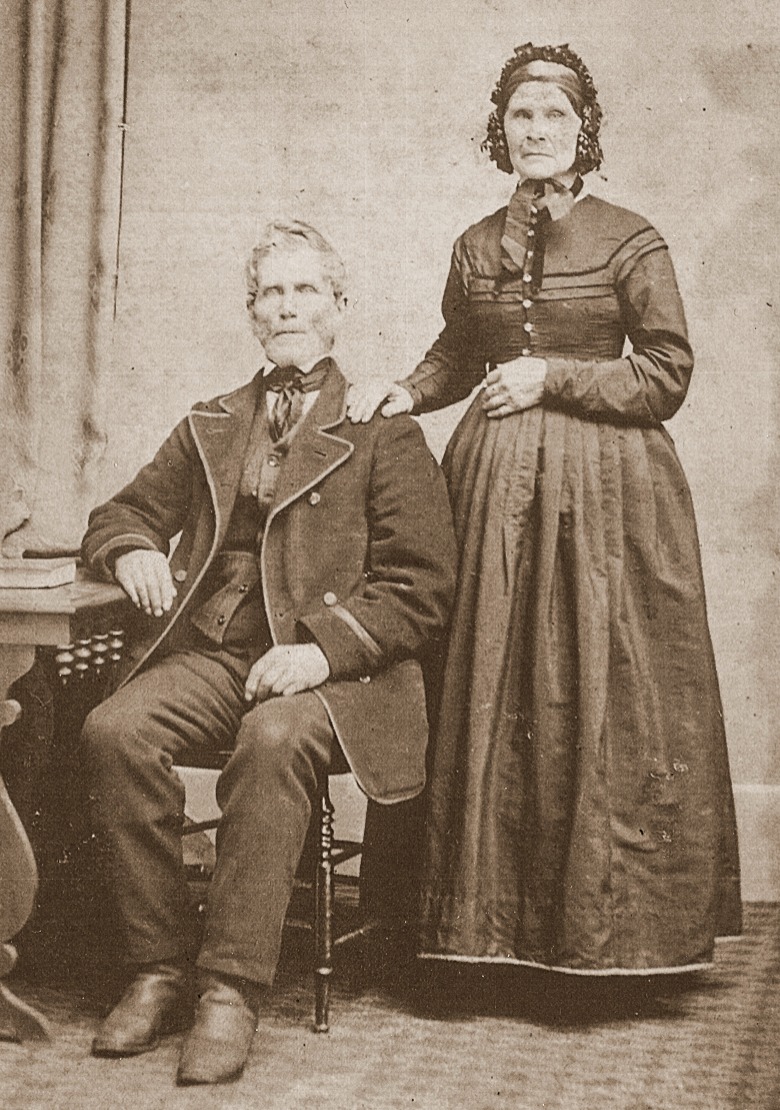
By 1833 forwarding companies operated steamboats on the Rideau, Ottawa and St. Lawrence Rivers, although the rapids on both the Ottawa and the St. Lawrence caused serious delays in navigation. The boats were side-wheelers, flat-bottomed SCOWS designed for freight rather than the comfort of the passengers. The steamer Pioneer was advertised in 1844 as stopping at Lindsay's Wharf, travelling upstream every Wednesday during the season.
The Macpherson and Crane Forwarding Company soon commanded the largest share of commerce on the Rideau and beyond, with steamers stopping regularly at Lindsay's Wharf for many years. The purchase of firewood to fuel the engines as well as potash, potatoes, wheat and' other commodities are recorded as exports in the wharf ledgers. The potash was shipped to England for bleach in the cotton factories.
The steamers Beaver, Caledonia, Charlotte and Prince Albert were named in the 1847-1854 ledger and manifests. Improvements were made as the passenger trade increased. Settlers from "Britain and Ireland made their way west into the wilds of North Gower Township, although some came overland from Richmond or the St. Lawrence front.
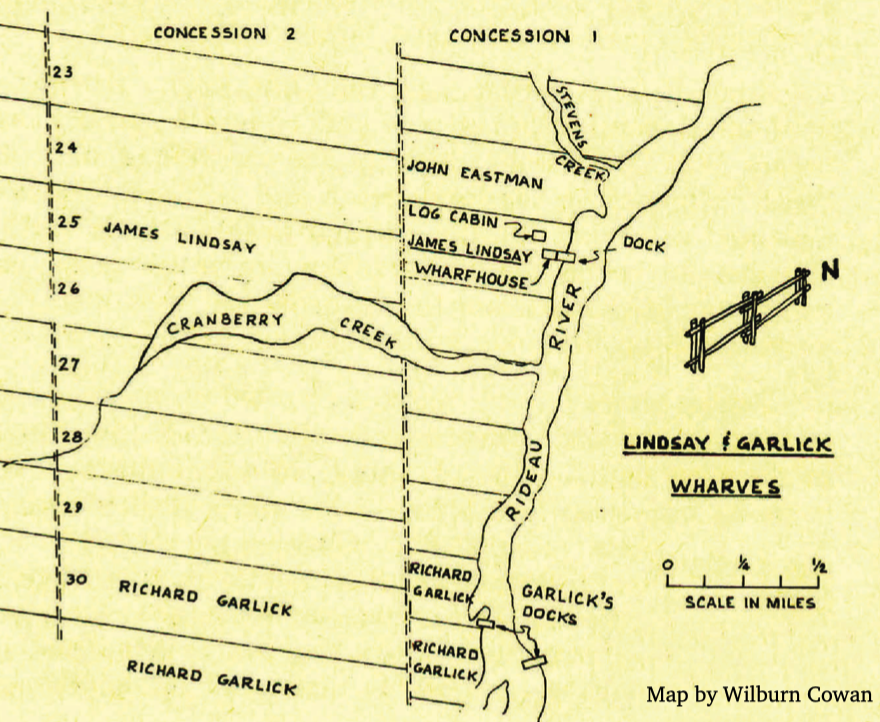
Mail for the settlers also arrived at Lindsay's Wharf, and was collected when the recipients or their neighbours came to the Wharf or to the adjacent schoolhouse or a church service. The mail address for everyone was North Gower until 1856, but Postmaster Lindsay knew each family, their location, country of origin and their religious and political persuasion.
The wharfhouse, built at the edge of the wharf for easy loading, served as a warehouse and protection from the weather. The first was of logs, replaced in 1876 with a larger pine-clad structure, The general store as well as the wharfinger's desk, ledger rack and letter boxes were in the wharfhouse.
Because currency was scarce in the 19th century, customers at Lindsay's Store usually ran a debit, and balanced the account with a day's work felling trees, threshing grain, plowing or handling wharfage.
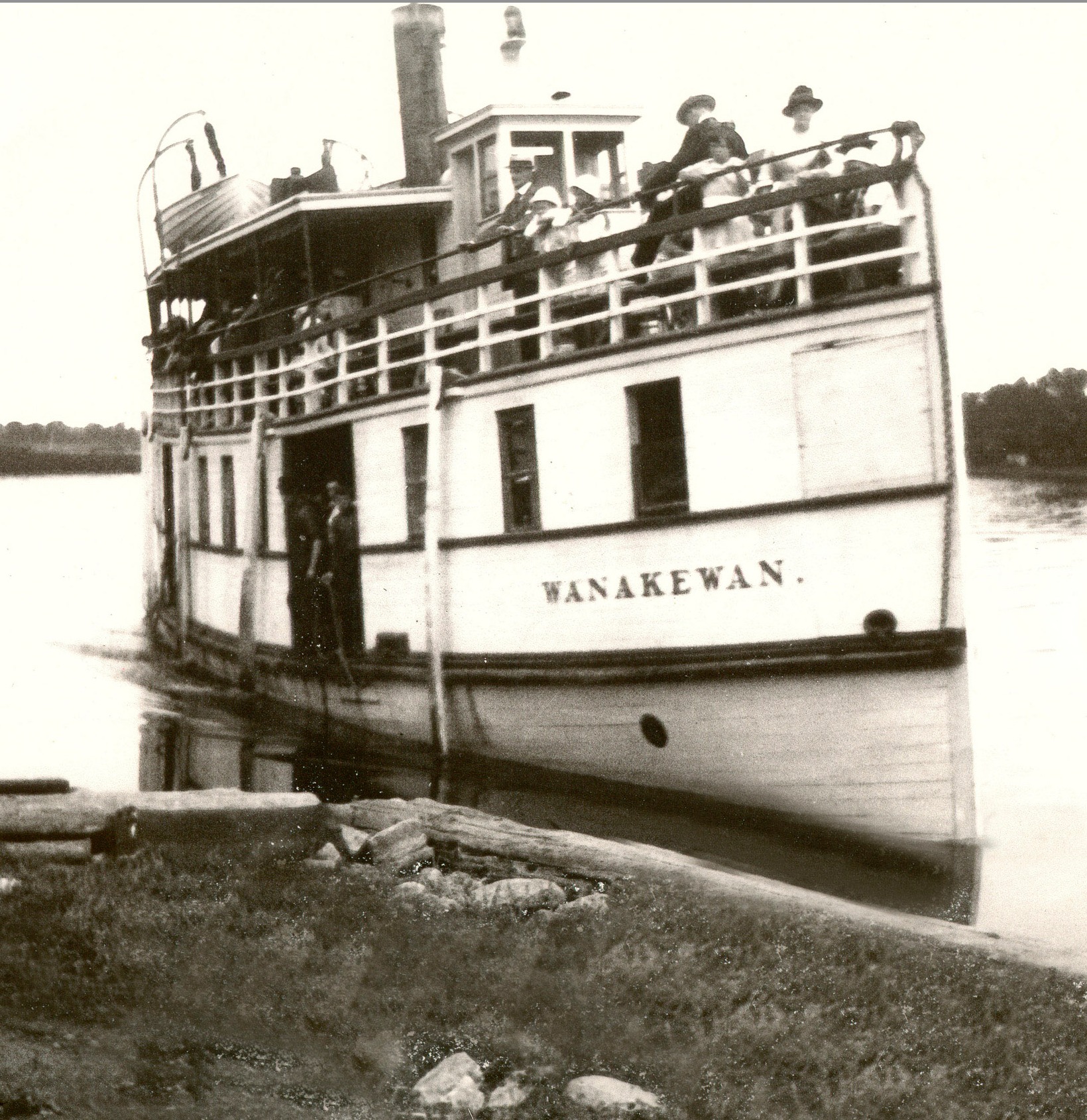
Purchases included tea, tobacco, salt, sugar, barrels of herring and mackerel, crates of crockery, kegs of nails, buckshot, butter churns, furniture, castor oil, cordial and coat buttons. Wood stoves replaced hearths. Homespun, woven at home, was traded for thread, calico, satinette, shawls, ribbons, lace, linen and grey white or chequered cotton. School books and quires of paper were also sold.
During the 1870s there was an increased demand for Ontario cheddar cheese for the British market. Local cheese factories became a reliable outlet for dairy farmers' milk throughout the summer months. The cheese was pressed into cheese boxes and hauled weekly to Lindsay's Wharf to be shipped out on steamers like the Olive, James Swift, Ottawan, Rideau King or Rideau Queen.
Railways and trucking companies eventually led to the demise of commercial navigation. The wharf operated until 1935. Ledgers, correspondence, manifests, photographs and artifacts from the wharf are now in the Rideau Branch of the Ottawa Archives.
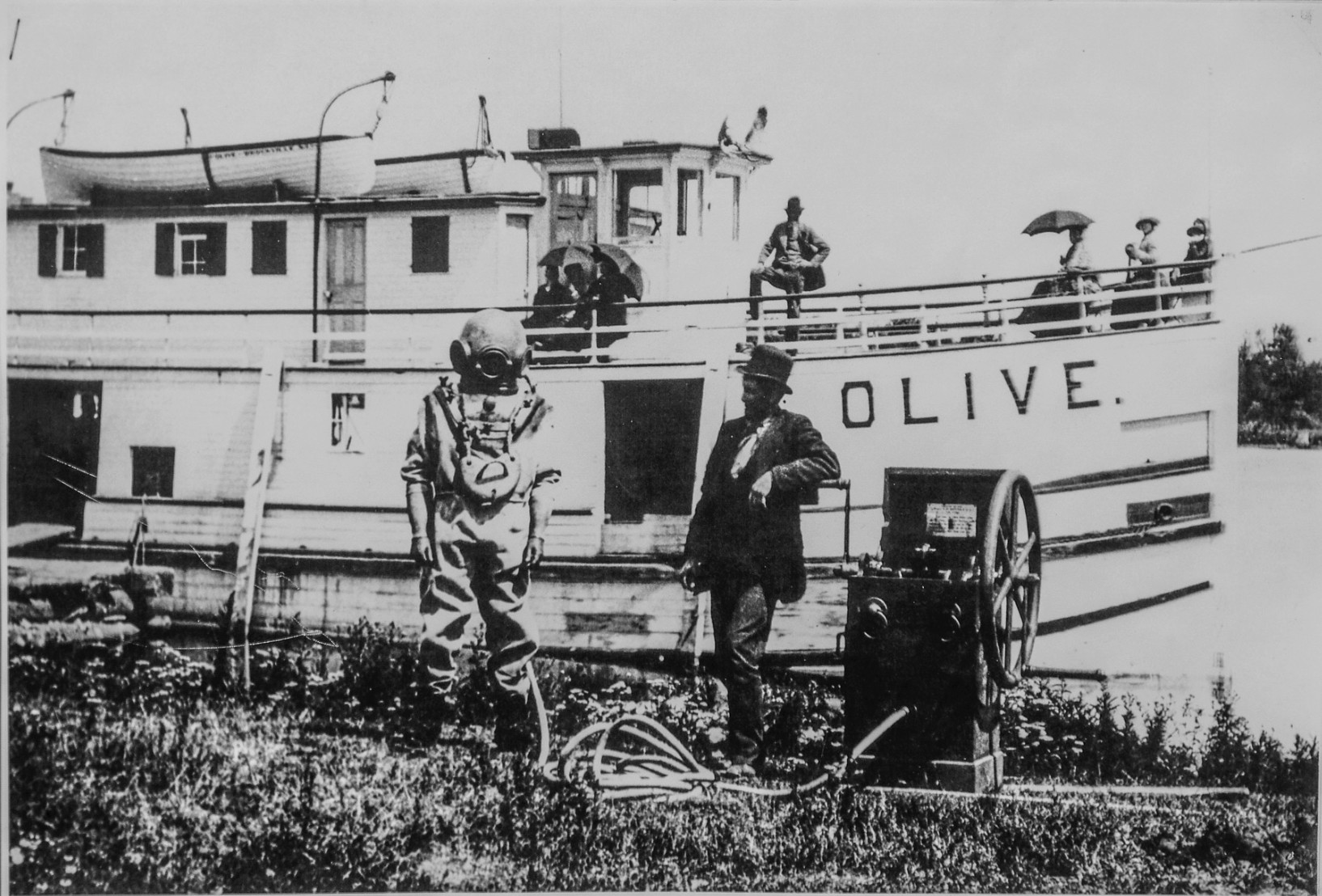
In addition to running the wharf, the children of James and Ellin made their mark on the community by farming and establishing local businesses such as Lindsay and McCaffrey in Manotick and other stores, a hotel, sawmill and grist mill. James and Ellin with their children witnessed with pleasure the official opening of the Canal in 1832, but the Lindsay grandchildren and great grands watched with regret the last trip of the steamer Ottawan in November, 1935 as their beloved lady made her stately progress upstream to a watery grave. Thus the end of à century of commercial navigation and a stopping place called Lindsay’s Wharf.
